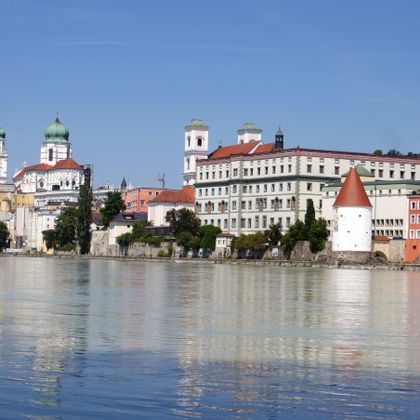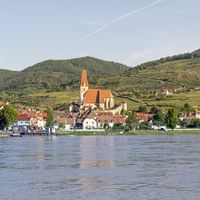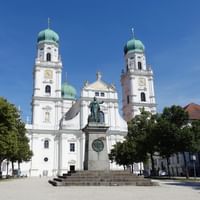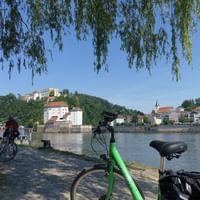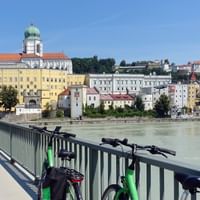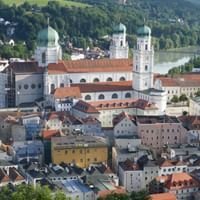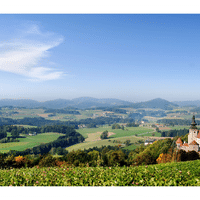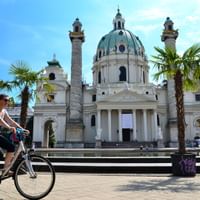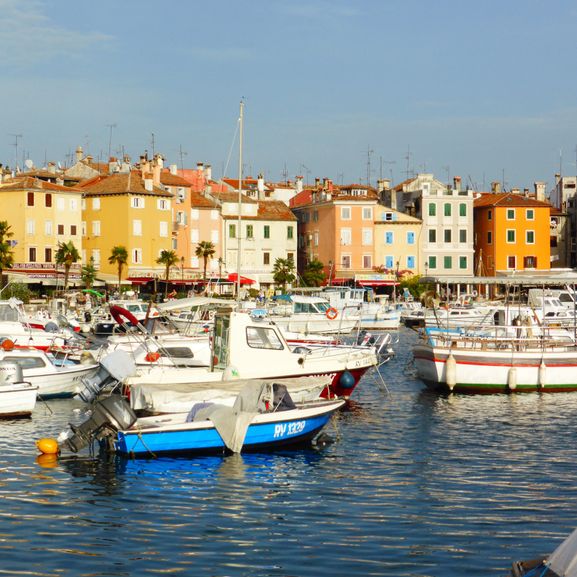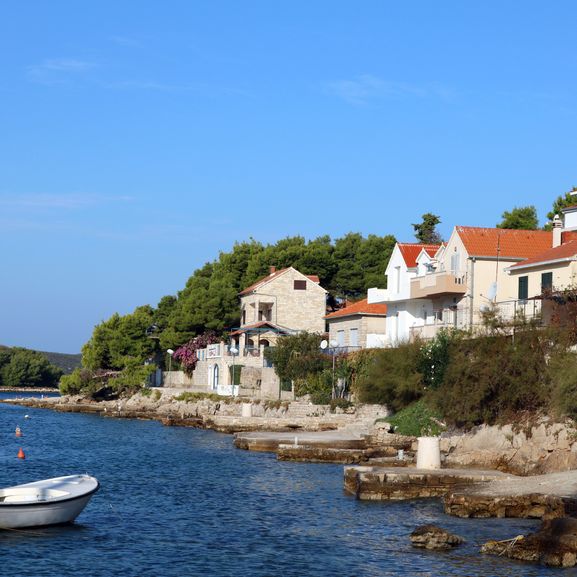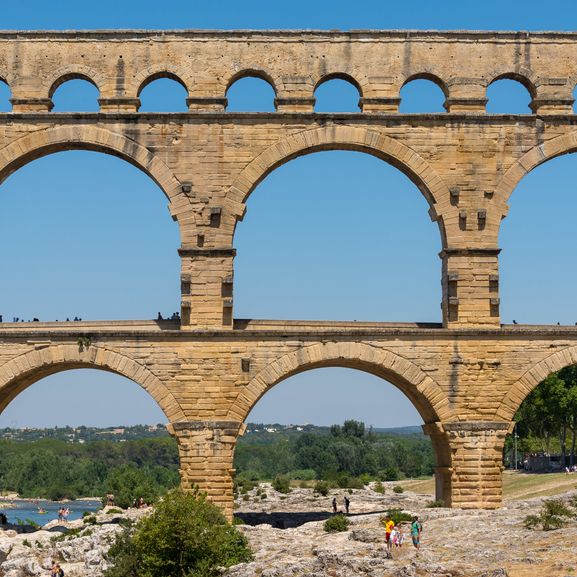Simply enchanting: the Danube Cycle Path classic or by bike & boat
Biking trips on the danube cycle path
The Danube Cycle Path is one of the most popular cycle routes in Europe and leads from Passau to Vienna in Austria. We offer the wonderfully varied route as a classic, as a farm tour, with charm hotels or in the sporty variant. Or you can discover the Danube on a wonderful combination of cycling and boat trip, where you can also get to know the historical capitals of Slovakia and Hungary, Bratislava and Budapest.
Popular classic
Cycle along the Danube on Europe's most popular cycle route - often directly along the banks! The cycle route is very well developed and asphalted, the signposting is excellent and the route is flat. Cycle along the Austrian Danube as far as Vienna or on a combination of cycle and boat trip to Bratislava in Slovakia and Budapest in Hungary. A classic! The signposting on the Austrian Danube Cycle Route also seems as huge and thorough at junctions as on a motorway. Travelling is impossible. It is not for nothing that the Danube Cycle Path is the most popular foreign cycle route, regularly scoring highly in the ADFC e. V. cycle tour analysis, and is also the oldest long-distance cycle route in Europe.

Leiwand
Leiwand!, an Austrian would say. Super! The classic cycle tour from Passau to Vienna takes you along the Danube to countless sights. Visit the old towns of Linz and Krems, which are well worth seeing. Melk Abbey, a UNESCO World Heritage Site, is a sight par excellence. It contains the 196 metre long imperial corridor, 497 rooms, 1,365 windows and currently 23 active monks. There are also 100,000 books in the Benedictine monastery, with 16,000 in the baroque library alone. Vienna, the Austrian capital, is a classic in its own right and has been voted the most liveable city in the world on several occasions. On the Ringstrasse you will find such impressive buildings as the neo-baroque Burgtheater, the neo-Gothic City Hall or the twin buildings of the Natural History and Art History Museums, built by Gottfried Semper and Carl Hasenauer in the historicist style. And don't forget to pay a visit to the Steffl, St Stephen's Cathedral. It is the symbol of Vienna.

Celebrations
People like to party on the Danube and so you are sure to cycle right into the middle of one or two festivals. Theatre festivals, open airs, music festivals and traditional events take place throughout the summer. The Danube Festival in Krems is a celebration of the avant-garde with performances, installations, music and film at 18 venues. Vienna hosts the annual Danube Island Festival, an open-air music festival that is said to be the largest in the world with free admission. The Lido Sounds Festival on the banks of the Danube in Linz is cross-genre. Music in the styles of indie, pop, soul, hip-hop and rock is performed.

Beisl and Buschenschank
Everywhere along the cycle path, inns invite you to linger and indulge in Austrian cuisine. A pub garden or pub beckons at every corner, a wine tavern, a wine tavern. Nobody has to starve or die of thirst. And there is plenty of choice: snack platter, currant cake, pancakes, nougat dumplings or even a flour dish? Maybe you'll just have a Radler (beer with lemonade). One, because here in Austria it has to be called "der Radler". In Krems or in the Wachau, you should try Grüner Veltliner, the most widely cultivated grape in Austria, a Riesling or a Zweigelt in a winegrower's pub. In Vienna, of course, there's Wiener Schnitzel. Make sure it's veal, only then is it real. And with your coffee, which is served here in many variations and is almost a science, perhaps treat yourself to a Sachertorte or an apple strudel. With whipped cream?

Danube loops and bends
The river landscapes along the Danube are varied and impressive. Sometimes you will see steep, wooded hills, sometimes vineyards stretching up the slopes or orchards. In the Schlögener Schlinge, cyclists can really get into the swing of things, as the Danube bends here. Twice it changes its direction of flow by a full 180° degrees. The most famous bend in the Danube is a natural spectacle! The Strudengau is so named because of the many whirlpools and rapids that the Danube creates here. This is where the female Danube lures captains with her little voice, who are magically attracted and stranded. The female Danube then eats them alive. At least that's how the legend goes. The Nibelungengau and the Wachau follow - the whole region with its sun-drenched wine terraces is a World Heritage Site. But no matter where, the Danube is always there, getting wider and wider.

